- Clone
- 15-2 (See other available formats)
- Regulatory Status
- RUO
- Other Names
- MMR (macrophage mannose receptor), MR (mannose receptor), CD206, MRC1
- Isotype
- Mouse IgG1, κ
- Ave. Rating
- Submit a Review
- Product Citations
- publications

-

GM-CSF-stimulated (day-3) human monocytes stained with purified 15-2, followed by anti-mouse IgG FITC.
| Cat # | Size | Price | Quantity Check Availability | Save | ||
|---|---|---|---|---|---|---|
| 321149 | 100 µg | 216€ | ||||
| 321150 | 1 mg | 542€ | ||||
Select size of product is eligible for a 40% discount! Promotion valid until December 31, 2024. Exclusions apply. To view full promotion terms and conditions or to contact your local BioLegend representative to receive a quote, visit our webpage.
Macrophage mannose receptor (MMR) is a 162-175 kD type I membrane protein also known as CD206, MRC1, or mannose receptor (MR). It is a pattern recognition receptor (PRR) that belongs to C-type lectin superfamily. MMR is expressed on macrophages, dendritic cells, and hepatic or lymphatic endothelial cells, but not on monocytes. MMR recognizes a range of microbial carbohydrates bearing mannose, fucose, or N-acetyl glucosamine. MMR mediates endocytosis and phagocytosis, induces activation of macrophages and antigen presentation, plays an important role in host defense, and provides a link between innate and adaptive immunity.
Product DetailsProduct Details
- Verified Reactivity
- Human
- Antibody Type
- Monoclonal
- Host Species
- Mouse
- Immunogen
- Purified human mannose receptor
- Formulation
- 0.2 µm filtered in phosphate-buffered solution, pH 7.2, containing no preservative.
- Endotoxin Level
- Less than 0.01 EU/µg of the protein (< 0.001 ng/µg of the protein) as determined by the LAL test.
- Preparation
- The Ultra-LEAF™ (Low Endotoxin, Azide-Free) antibody was purified by affinity chromatography.
- Concentration
- The antibody is bottled at the concentration indicated on the vial, typically between 2 mg/mL and 3 mg/mL. Older lots may have also been bottled at 1 mg/mL. To obtain lot-specific concentration and expiration, please enter the lot number in our Certificate of Analysis online tool.
- Storage & Handling
- The antibody solution should be stored undiluted between 2°C and 8°C. This Ultra-LEAF™ solution contains no preservative; handle under aseptic conditions.
- Application
-
FC - Quality tested
WB, ICC, IHC-F - Reported in the literature, not verified in house - Recommended Usage
-
Each lot of this antibody is quality control tested by immunofluorescent staining with flow cytometric analysis. For flow cytometric staining, the suggested use of this reagent is ≤ 1.0 µg per million cells in 100 µL volume. It is recommended that the reagent be titrated for optimal performance for each application.
- Application Notes
-
The 15-2 antibody blocks the interaction of MMR with its ligand, and inhibits mannose receptor-mediated degradation of t-PA by macrophages. Additional reported applications of this antibody (for the relevant formats) include: Western blotting1, blocking of ligand binding1,2, immunofluorescence3, and immunohistochemical staining of acetone-fixed frozen tissue sections1. The Utra-LEAF™ purified antibody (Endotoxin < 0.01 EU/µg, Azide-Free, 0.2 µm filtered) is recommended for functional assays (Cat. No. 321149 and 321150).
-
Application References
(PubMed link indicates BioLegend citation) -
- Noorman F, et al. 1997. J. Leukocyte Biol. 61:63. (WB, IHC, Block)
- Barrett-Bergshoeff M, et al. 1997. Thromb Haemost. 77:718. (Block)
- Kato M, et al. 2007. J. Immunol. 179:6052. (IF)
- RRID
-
AB_2819952 (BioLegend Cat. No. 321149)
AB_2819952 (BioLegend Cat. No. 321150)
Antigen Details
- Structure
- Type I membrane protein, Pattern Recognition Receptor (PRR) family, C-type lectin superfamily, 162-175 kD
- Distribution
-
Macrophages, dendritic cells, hepatic and lymphatic endothelial cells
- Function
- Pathogen binding, facilitate phagocytosis and endocytosis, macrophage activation and antigen presentation
- Ligand/Receptor
- Mannose, fucose, N-acetyl glucosamine
- Cell Type
- Dendritic cells, Endothelial cells, Macrophages
- Biology Area
- Cell Biology, Immunology, Neuroscience, Neuroscience Cell Markers
- Molecular Family
- CD Molecules
- Antigen References
-
1. Mason D, et al. Eds. 2002. Leukocyte Typing VII. Oxford University Press. p303
2. Wileman TE, et al. 1986. P. Natl. Acad. Sci. USA 83:2501.
3. Apostolopoulos V and McKenzie IF. 2001. Curr. Mol. Med. 1:469.
4. Le Cabec V, et al. 2005. J. Leukocyte Biol. 77:934.
5. Barrett-Bergshoeff M, et al. 1997. Thromb. Haemostatis 77:718. - Gene ID
- 4360 View all products for this Gene ID
- UniProt
- View information about CD206 on UniProt.org
Related Pages & Pathways
Pages
Related FAQs
- Do you guarantee that your antibodies are totally pathogen free?
-
BioLegend does not test for pathogens in-house aside from the GoInVivo™ product line. However, upon request, this can be tested on a custom basis with an outside, independent laboratory.
- Does BioLegend test each Ultra-LEAF™ antibody by functional assay?
-
No, BioLegend does not test Ultra-LEAF™ antibodies by functional assays unless otherwise indicated. Due to the possible complexities and variations of uses of biofunctional antibodies in different assays and because of the large product portfolio, BioLegend does not currently perform functional assays as a routine QC for the antibodies. However, we do provide references in which the antibodies were used for functional assays and we do perform QC to verify the specificity and quality of the antibody based on our strict specification criteria.
- Does BioLegend test each Ultra-LEAF™ antibody for potential pathogens?
-
No, BioLegend does not test for pathogens in-house unless otherwise indicated. However, we can recommend an outside vendor to perform this testing as needed.
- Have you tested this Ultra-LEAF™ antibody for in vivo or in vitro applications?
-
We don't test our antibodies for in vivo or in vitro applications unless otherwise indicated. Depending on the product, the TDS may describe literature supporting usage of a particular product for bioassay. It may be best to further consult the literature to find clone specific information.
Other Formats
View All CD206 Reagents Request Custom ConjugationCompare Data Across All Formats
This data display is provided for general comparisons between formats.
Your actual data may vary due to variations in samples, target cells, instruments and their settings, staining conditions, and other factors.
If you need assistance with selecting the best format contact our expert technical support team.
-
Purified anti-human CD206 (MMR)
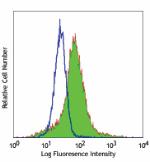
GM-CSF-stimulated (day-3) human monocytes stained with purif... -
FITC anti-human CD206 (MMR)

GM-CSF stimulated (day3) human peripheral blood monocytes st... -
PE anti-human CD206 (MMR)
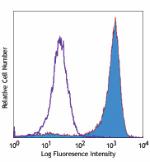
GM-CSF-stimulated (day-3) human monocytes stained with 15-2 ... -
PE/Cyanine5 anti-human CD206 (MMR)
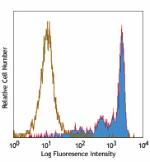
GM-CSF-stimulated human peripheral blood monocytes (day-3) s... -
APC anti-human CD206 (MMR)
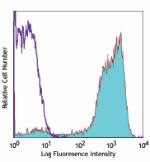
GM-CSF- stimulated (day-3) human monocytes stained with 15-2... -
Alexa Fluor® 488 anti-human CD206 (MMR)
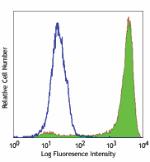
GM-CSF-stimulated (day-3) human monocytes stained with 15-2 ... -
Alexa Fluor® 647 anti-human CD206 (MMR)
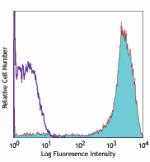
GM-CSF-stimulated (day-3) human monocytes stained with 15-2 ... -
Biotin anti-human CD206 (MMR)
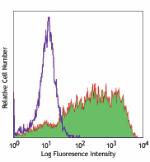
GM-CSF-stimulated human peripheral blood monocytes (day-3) s... -
APC/Cyanine7 anti-human CD206 (MMR)
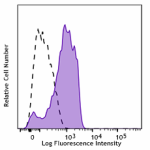
GM-CSF-stimulated (6 days) human peripheral blood monocytes ... -
PerCP/Cyanine5.5 anti-human CD206 (MMR)
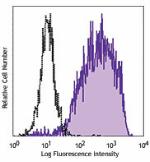
GM-CSF-stimulated (3 days) human peripheral blood monocytes ... -
PE/Cyanine7 anti-human CD206 (MMR)
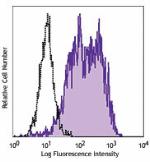
GM-CSF-stimulated (3 days) human peripheral blood monocytes ... -
Brilliant Violet 421™ anti-human CD206 (MMR)

GM-CSF-stimulated (3 days) human peripheral blood monocytes ... -
Purified anti-human CD206 (MMR) (Maxpar® Ready)
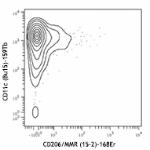
Human PBMCs were incubated for 3 days in media alone (top) o... 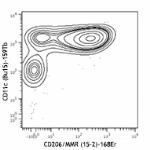
-
Alexa Fluor® 700 anti-human CD206 (MMR)
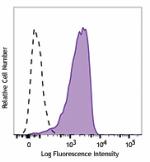
GM-CSF-stimulated (3 days) human peripheral blood monocytes ... -
PE/Dazzle™ 594 anti-human CD206 (MMR)
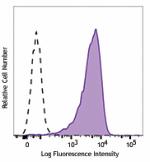
GM-CSF-stimulated (3 days) human peripheral blood monocytes ... -
APC/Fire™ 750 anti-human CD206 (MMR)

GM-CSF-stimulated (3 days) human peripheral blood monocytes ... -
Brilliant Violet 711™ anti-human CD206 (MMR)
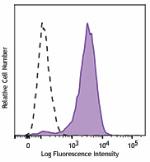
GM-CSF-stimulated (3 days) human peripheral blood monocytes ... -
Brilliant Violet 510™ anti-human CD206 (MMR)
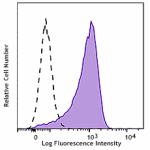
GM-CSF stimulated (3 days) human peripheral blood monocytes ... -
Brilliant Violet 605™ anti-human CD206 (MMR)
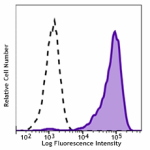
GM-CSF induced human monocytes (3 days) were stained with CD... -
Brilliant Violet 785™ anti-human CD206 (MMR)

GM-CSF induced human monocytes (3 days) were stained with CD... -
TotalSeq™-A0205 anti-human CD206 (MMR)
-
TotalSeq™-B0205 anti-human CD206 (MMR)
-
TotalSeq™-C0205 anti-human CD206 (MMR)
-
Ultra-LEAF™ Purified anti-human CD206 (MMR)

GM-CSF-stimulated (day-3) human monocytes stained with purif... -
Pacific Blue™ anti-human CD206 (MMR)
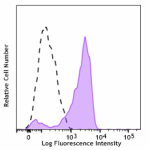
Human peripheral blood monocytes were stimulated with GM-CSF... -
PE/Fire™ 700 anti-human CD206 (MMR)
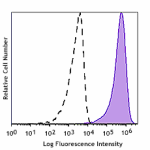
GM-CSF stimulated (3 days) human peripheral blood monocytes ... -
TotalSeq™-D0205 anti-human CD206 (MMR)
-
Spark NIR™ 685 anti-human CD206 (MMR)

GM-CSF stimulated (3 days) human peripheral blood monocytes ... -
Spark Red™ 718 anti-human CD206 (MMR) (Flexi-Fluor™)
-
Brilliant Violet 650™ anti-human CD206 (MMR)

GM-CSF stimulated (3 days) human peripheral blood mononuclea... 
GM-CSF stimulated (3 days) human peripheral blood mononuclea... -
Spark Blue™ 574 anti-human CD206 (MMR) (Flexi-Fluor™)
-
Spark Blue™ 550 anti-human CD206 (MMR) (Flexi-Fluor™)
 Login / Register
Login / Register 









Follow Us